Resources
Whale Watching
- Whale Alert is a citizen science app where whale sightings are used to help prevent vessel strikes.
- Whale Safe is a technology-based mapping and analysis tool displaying whale and ship data—designed to prevent fatal ship collisions with whales.
Endangered Whales
- The most endangered large whales on the planet are born within 15 miles of the Georgia coast
The Right Whale to Hunt
- Heavily hunted for more than 900 years, right whales have yet to recover from the pressures of historic whaling. Before the era of whaling, right whale populations were estimated to be over 100,000. By 1935, as whaling became illegal, less than one hundred individuals survived.
1970s – 1980s Conservation and Discovery
- Right whales gained federal protection in 1973 with the Endangered Species Act and the Marine Mammal Protection Act.
- In the winter of 1981-82, Charles Cowan, Hans Neauhauser, and Cathy Sakas discovered a beached N. Atlantic right whale calf on a Little St. Simons beach off Coastal Georgia.
- In 1984, Scott Kraus, leading North Atlantic right whale researcher from the New England Aquarium, and Delta Airlines pilot David Mattingly organized aerial surveillance research which documented mothers and newborn calves along the Georgia coast. This would become a pivotal publication named the “Delta Surveys”.
- In 1985, following the discovery of this calving ground and critical habitat, just 15 miles off the coast of Georgia and northern Florida, Hans Neauhauser lead the successful campaign to Georgia State Assembly to designate the right whale as Georgia’s state marine mammal.
- Human behavior over the next few decades would determine the destiny of this species.
Lines and Strikes
- Dubbed the ‘urban whale,’ right whales breed, feed, and migrate within 50 miles of the eastern seaboard, in the most urbanized ocean on the planet. Right whales are subject to human-related mortality due to commercial fishing and shipping.
- Since June 2017, there have been 34 right whale deaths, and the leading category for the cause of death is “human interaction,” specifically from entanglements or vessel strikes by entanglement in fishing gear, or ship strikes.
- On July 10th 2017 Joe Howlett lost his life disentangling a N. Atlantic right whale. He was a lobster fisherman who helped start the rescue team in 2002. His expertise working with fishing equipment and ropes made him adept at helping cut entangled marine mammals free. He worked tirelessly for fifteen years to save our Urban Whale.
- There are now only about 360 right whales in the current population, with as few as 100 reproductive females. There has been a 99.99 percent decline in the right whale population since 2010. Research suggests that within 23 years, we will lose all the reproductive age female N. Atlantic right whales and begin the end of a species.
- Every calf, mother or North Atlantic right whale spotted off the coast each Winter is our reminder of their will for survival.

